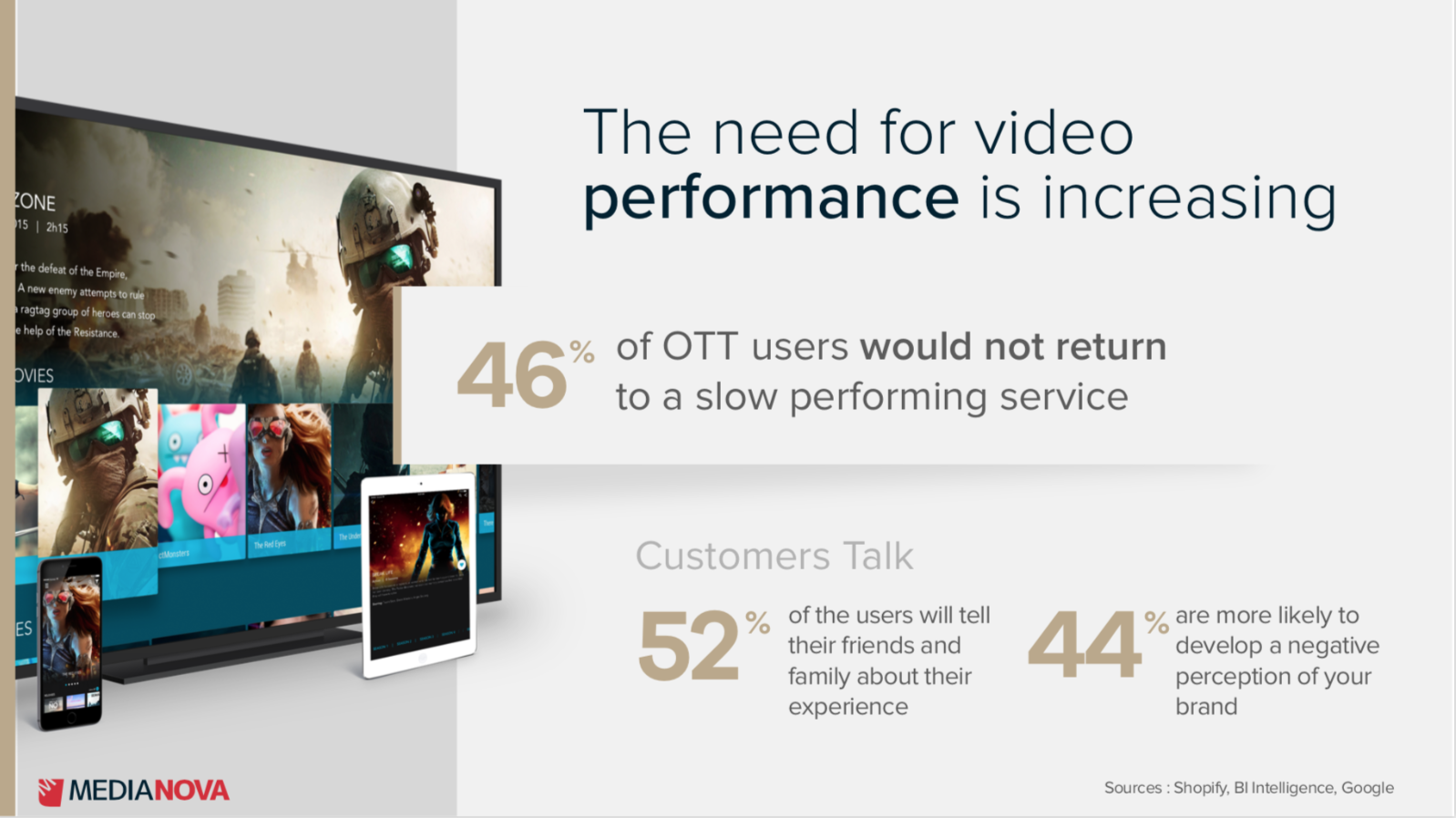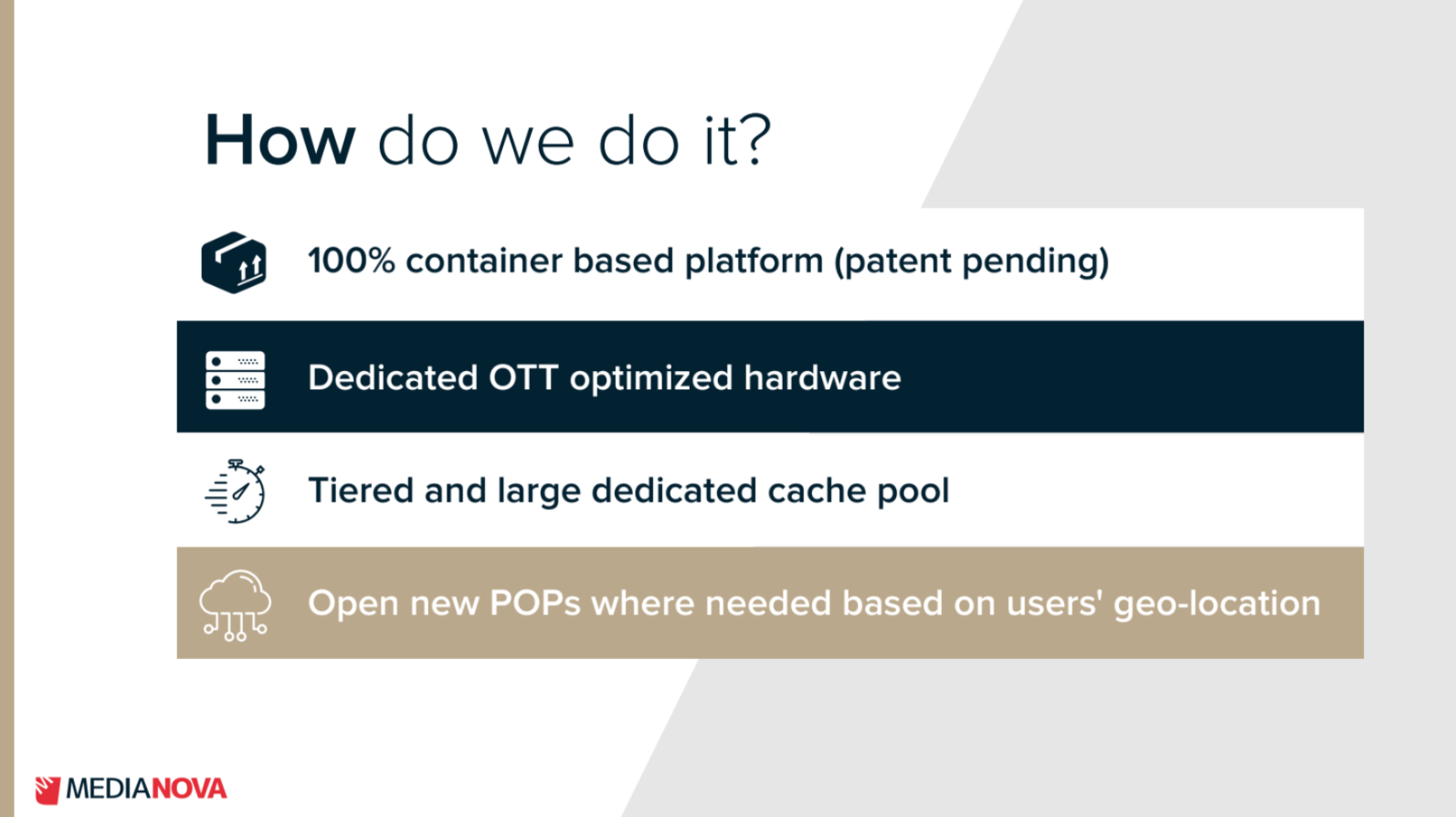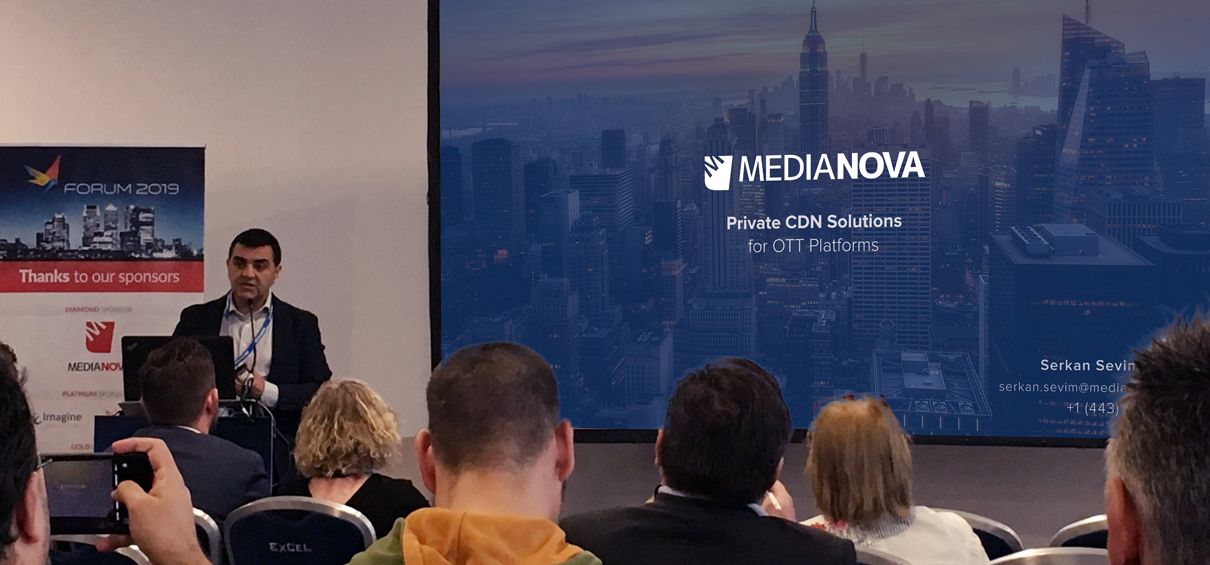Insightful Takeaways from The Streaming Forum 2019
Last week, we attended the Streaming Forum 2019, London, and we were their diamond sponsor.
The theme of the conference was carefully selected as “OTT: Better than Broadband?”.
Before we start, let me briefly give you my personal background.
I started my first business at the age of 25 in the United States during my master’s degree. Our office was not a college dorm but the small bedroom inside my tiny condo.
It was 1999 and our project was a community portal website called mezun.com, which targeted Turkish-Americans living in the United States.
Our first product was an online calling card that helped the Turkish community make phone calls back home to Turkey. It was a huge success that earned us global recognition and a couple of prizes, including being a finalist in EY’s Entrepreneur of the Year awards.
Later around 2003, we found ourselves looking for new products and our research led us to “Streaming as a Service”. This was the year we started another portal website, where we sold pay-per-view football games to the Turkish community around the world. The business was a hit and we were able to acquire 40,000 customers from 97 countries within a couple of months. This was during the time when YouTube and Netflix were sending d DVDs to homes.
After 15 years in the streaming business, we attend a conference where people agreed that streaming was the next big thing and OTT platforms were soaring in popularity.
It is widely known that the total cable subscribers worldwide declined for the first time in history in 2018.

After the success of Netflix, we saw new OTT services emerging around the world. We believe this was a big reason why the Streaming Forum 2019 conference drew over 150 OTT executives looking for answers to their questions.
The need for video performance is increasing
Another trend that the industry agrees is that the need for performance on all platforms is increasing. According to a recent survey, 46% of the video platform users say that they would not return to a slow performing service.

This brings another challenge to new OTT platforms because the users come with an expectation and traffic can be enormous from day one.
What is OTT Anyway?
OTT is a term that is used for digital services mainly based on video and/or audio. An OTT service could be a platform like Netflix, Starz Play or a music platform such as Spotify or Fizy. Most broadcast and cable companies now feel the pressure and are trying to jump on the OTT train before it is too late.
So, What is the Problem Facing OTT Companies?
Gartner says that two of the biggest challenges facing OTT companies are performance and making money. It’s the industry dream to have broadcast-grade streaming quality across the globe with all the digital benefits, such as targeted ads, interactivity, and “anywhere any device”. Of course, this vision comes with technological challenges.
What are the OTT Performance Challenges?
- Workflow issues
It’s a widely-known issue that the workflow of a whole streaming platform becomes unstable once the traffic increases. The workflow starts from content storage, then moves to encoding, transcoding, digital rights management, an origin infrastructure, and content delivery using multi-CDN and monitoring on all levels. Often, each layer is built and managed by a different company, which is a huge challenge when locating and fixing problems. In other words, a workflow that works great with low traffic starts to fall apart once the traffic increases.
- Legacy Content Delivery Network (CDN) Architecture
The second technology problem is regarding the Legacy Content Delivery Network (CDN) companies. CDNs cache content and started to appear around 20 years ago. The original idea was to cache the popular content at the edge, i.e closer to users. However, after 20 years of its invention, the industry ended up relying on legacy software running on older equipment, which was not flexible enough for the ever-increasing demand of streaming services. On top of that, with the emergence of large content libraries, it became extremely difficult to cache the content at the very edge, and latency resulted in low streaming quality at high traffic periods.
Benefits of Hybrid CDN
To solve this problem, we suggested Hybrid CDN architectures to power the OTT. This new topology mixes cloud CDNs with managed Private CDN platforms in a Multi-CDN environment.
The main benefit of Hybrid CDN is that the single-tenant Private CDN part can be customized based on the targeted geography and content size of the OTT service. Each platform races to provide the best performance and the user wins.
Medianova’s EdgeCache Technology
On top of that, Medianova’s new EdgeCacheTM technology creates a pool of cache space at the last mile. Running a successful Cloud CDN gives us the opportunity to see both worlds. We believe that merging the SSD cache servers at the very edge and creating one single large cache pool makes more sense for today’s OTT world.
Moreover, using a Docker-based containerized agile solution, a Private CDN platform is not as expensive as it sounds.

This brings us to the next challenge of OTTs. How to make money?
The second challenge Gartner mentions is making money with an OTT service. Although there’s huge customer demand for streaming services, OTT companies need to control their technology spending wisely to make real money (or at least survive to the next level).
Amazon’s AWS S3 is widely known as the origin service of OTTs. However, due to the very high data out costs of S3, the solution makes no sense when a Multi-CDN architecture is in place or the OTTs are forced to use Amazon’s Cloudfront as the single CDN.
Nowadays, a new solution is suggested by technology companies, which is moving these origin platforms to services like Wasabi or Stook. A platform like this is mainly an origin storage service using the 100% Amazon S3 compatible APIs and can be built at the hearth of your users. Moreover, to save on data out costs of S3 and move the origin to much closer, all that needs to be done is to copy the files and change the service URL with new login credentials.
Another Major Optimization Point: Content Delivery Costs
We know that with the emergence of the Multi-CDN model, content delivery companies started to lower their prices because of the increased competition. As mentioned, the idea we proposed in the Streaming Forum 2019 was to add your own managed Private CDN platform to your Multi-CDN mix. A Private CDN gives you more control, better quality and the leverage to negotiate with Cloud CDNs and make new deals with Tier 1 operators to cache your content to the core of the ISP.
The gains are pretty clear with managed Private CDN:
(a) Dedicated single-tenant architecture based on your needs and content.
(b) Management and license fees that are not based on traffic.
(c) Forcing Cloud CDNs to lower their prices to compete with the low cost of Private CDN, a total win on the delivery cost.
(d) Container-based agile structure allows you to expand to new ISPs within a couple of days.
Please contact us for t more information about Medianova’s Hybrid CDN Architecture and single-tenant secure Private CDN.




